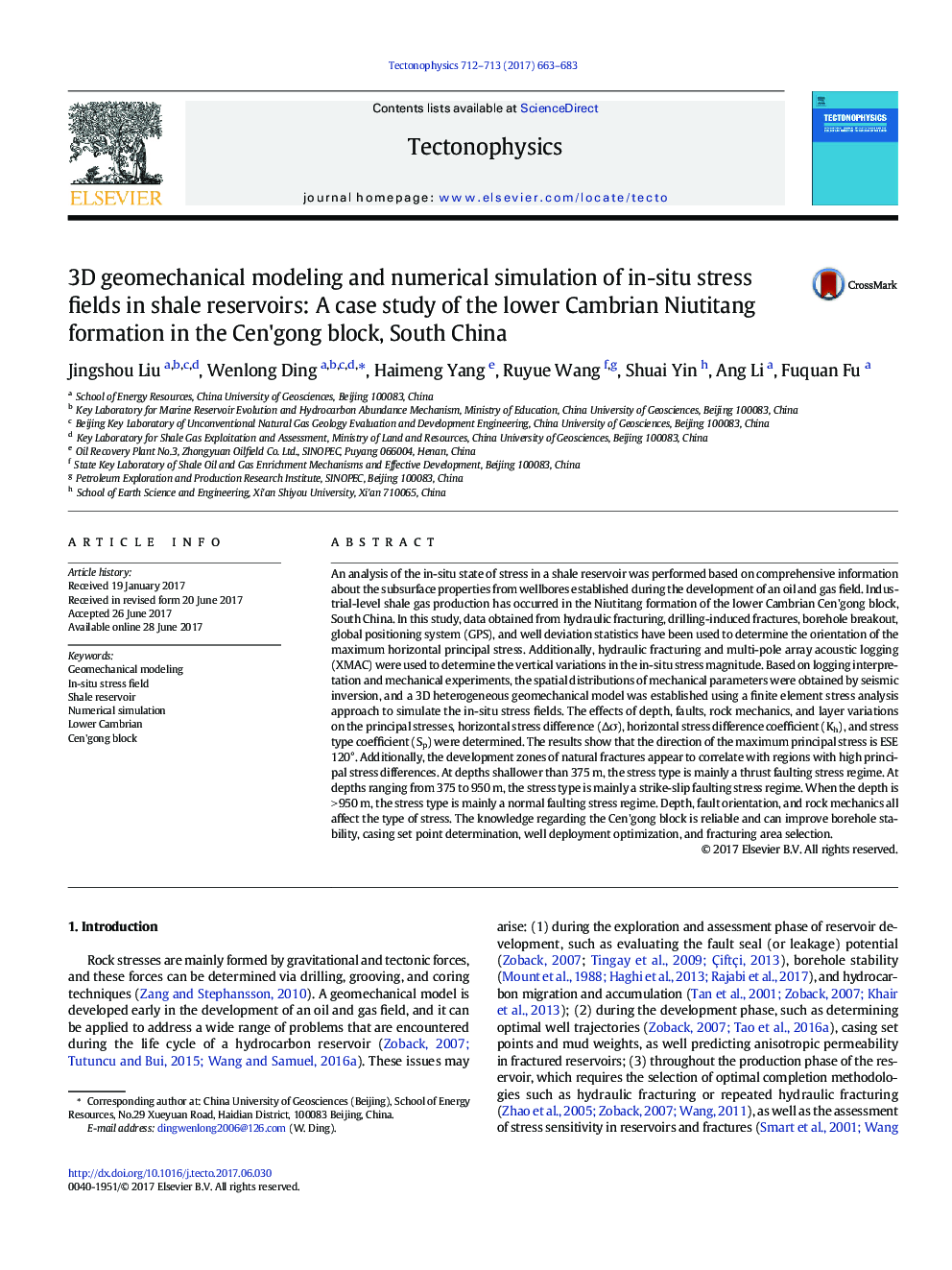| Article ID | Journal | Published Year | Pages | File Type |
|---|---|---|---|---|
| 5781567 | Tectonophysics | 2017 | 21 Pages |
â¢The direction of maximum horizontal principal stress in the Cen'gong block was determined.â¢3D geomechanical parameters were established based on seismic inversion.â¢3D heterogeneous geological models of the in situ stress fields were developed.â¢3D distributions of the horizontal stress difference, horizontal stress difference coefficient and stress type coefficientâ¢Depth, fault orientation, and rock mechanical parameters all affect the stress type.
An analysis of the in-situ state of stress in a shale reservoir was performed based on comprehensive information about the subsurface properties from wellbores established during the development of an oil and gas field. Industrial-level shale gas production has occurred in the Niutitang formation of the lower Cambrian Cen'gong block, South China. In this study, data obtained from hydraulic fracturing, drilling-induced fractures, borehole breakout, global positioning system (GPS), and well deviation statistics have been used to determine the orientation of the maximum horizontal principal stress. Additionally, hydraulic fracturing and multi-pole array acoustic logging (XMAC) were used to determine the vertical variations in the in-situ stress magnitude. Based on logging interpretation and mechanical experiments, the spatial distributions of mechanical parameters were obtained by seismic inversion, and a 3D heterogeneous geomechanical model was established using a finite element stress analysis approach to simulate the in-situ stress fields. The effects of depth, faults, rock mechanics, and layer variations on the principal stresses, horizontal stress difference (ÎÏ), horizontal stress difference coefficient (Kh), and stress type coefficient (Sp) were determined. The results show that the direction of the maximum principal stress is ESE 120°. Additionally, the development zones of natural fractures appear to correlate with regions with high principal stress differences. At depths shallower than 375 m, the stress type is mainly a thrust faulting stress regime. At depths ranging from 375 to 950 m, the stress type is mainly a strike-slip faulting stress regime. When the depth is > 950 m, the stress type is mainly a normal faulting stress regime. Depth, fault orientation, and rock mechanics all affect the type of stress. The knowledge regarding the Cen'gong block is reliable and can improve borehole stability, casing set point determination, well deployment optimization, and fracturing area selection.
